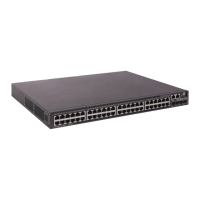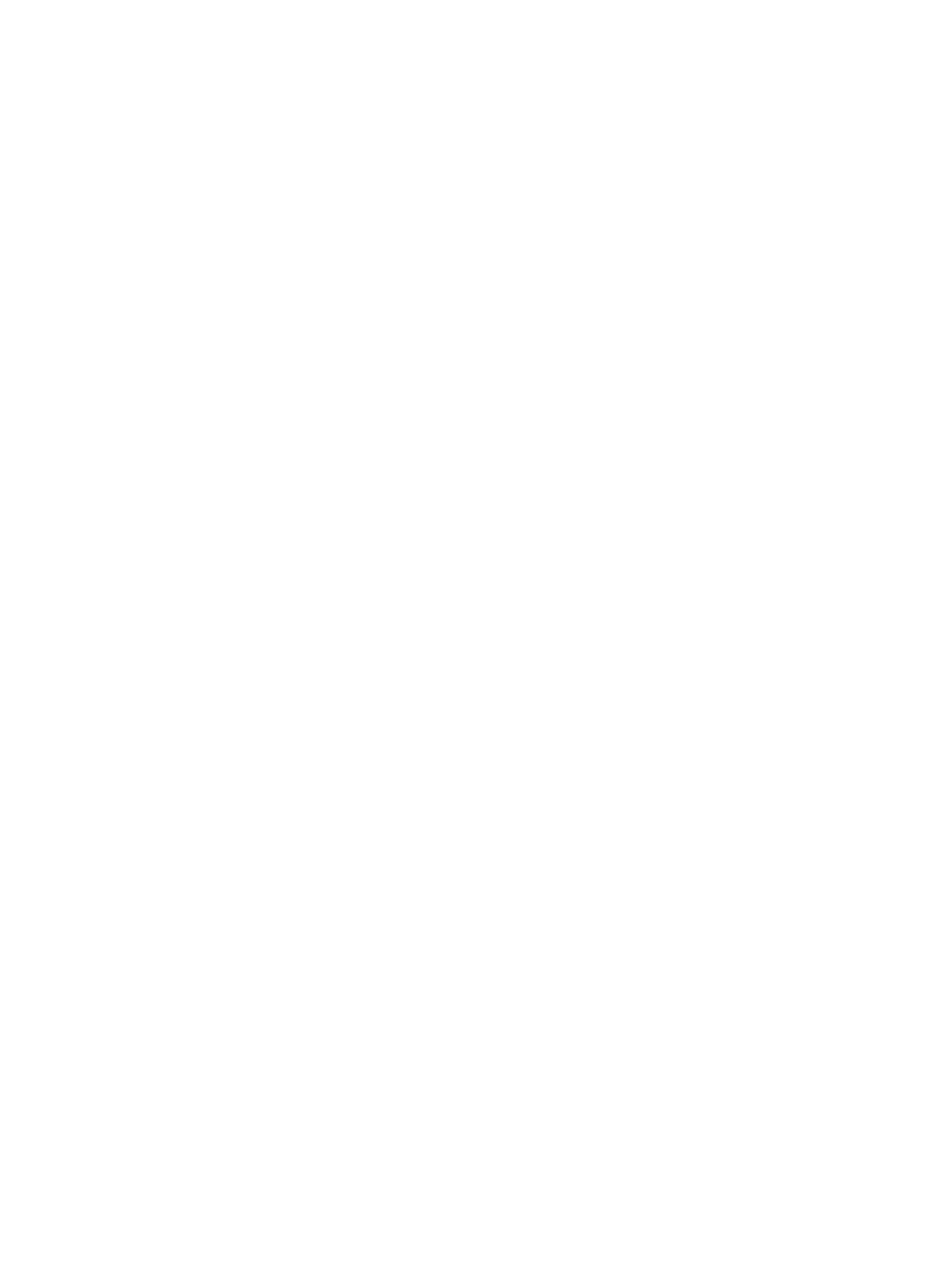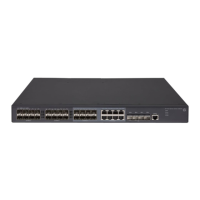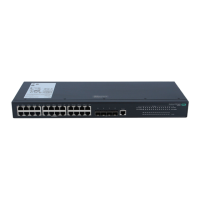27
Usage guidelines
This command takes effect after you configure it on the interface at either end of a link and the two
interfaces are configured to automatically negotiate the speed.
This command is applicable only to GE interfaces.
Examples
# Enable automatic negotiation for speed downgrading on GigabitEthernet 1/0/1.
<Sysname> system-view
[Sysname] interface gigabitethernet 1/0/1
[Sysname-GigabitEthernet1/0/1] speed auto downgrade
Layer 2 Ethernet interface commands
broadcast-suppression
Use broadcast-suppression to enable broadcast suppression and set the broadcast suppression
threshold.
Use undo broadcast-suppression to restore the default.
Syntax
broadcast-suppression { ratio | pps max-pps | kbps max-kbps }
undo broadcast-suppression
Default
Ethernet interfaces do not suppress broadcast traffic.
Views
Layer 2 Ethernet interface view
Predefined user roles
network-admin
Parameters
ratio: Sets the broadcast suppression threshold as a percentage of the maximum interface rate. The
value range for this argument is 0 to 100. The smaller the percentage, the less broadcast traffic is
allowed to pass through.
pps max-pps: Specifies the maximum number of broadcast packets that the interface can forward
per second. The value range for the max-pps argument (in pps) is 0 to 1.4881 × the maximum
interface rate. For example, the value range for this argument is 0 to 1488100 on a GE interface and
0 to 59524000 on a 40-GE interface.
kbps max-kbps: Specifies the maximum number of kilobits of broadcast traffic that the Ethernet
interface can forward per second. The value range for this argument (in kbps) is 0 to the maximum
interface rate.
Usage guidelines
You can use the broadcast storm suppression function to limit the size of broadcast traffic on an
interface. When the broadcast traffic on the interface exceeds this threshold, the system drops
packets until the traffic drops below this threshold.
Both storm-constrain and broadcast-suppression can suppress broadcast storm on a port. The
storm-constrain command uses software to suppress broadcast traffic, and it affects the device
performance to a certain extent. The broadcast-suppression command uses the chip to physically
suppress broadcast traffic, and it has less influence on the device performance than the

